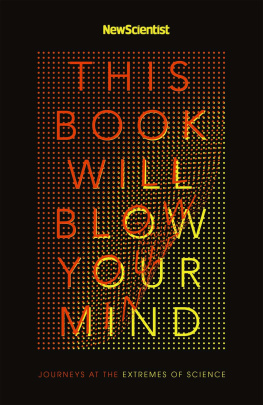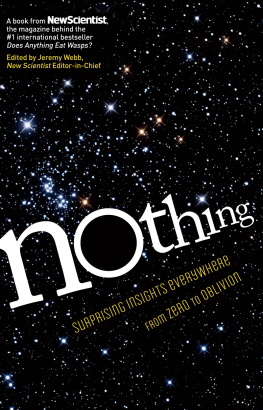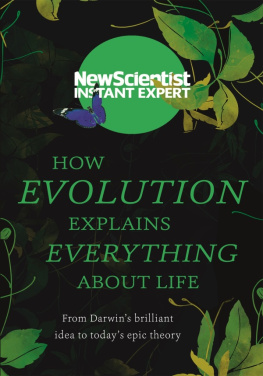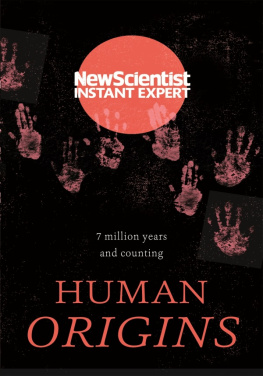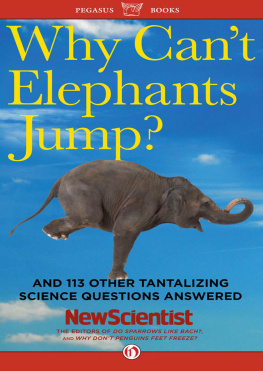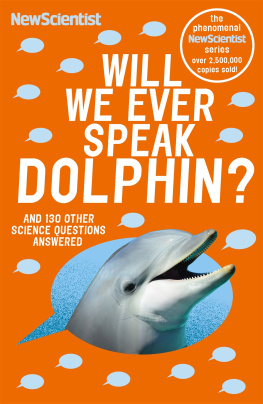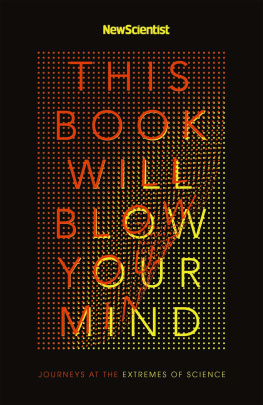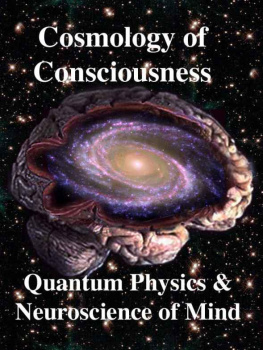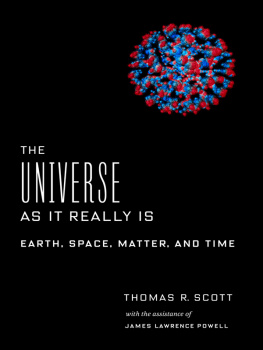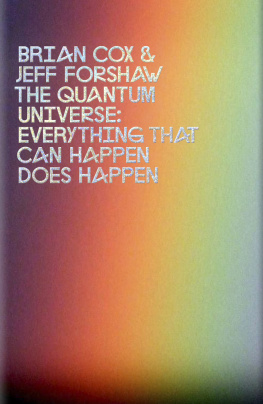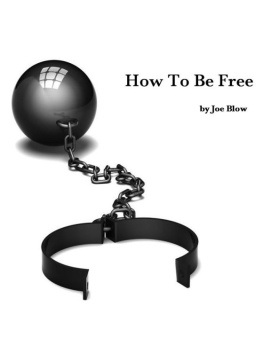
www.johnmurray.co.uk
First published in Great Britain in 2018 by John Murray (Publishers)
First published in the US in 2018 by Nicholas Brealey
An Hachette UK company
Copyright New Scientist 2018
The right of New Scientist to be identified as the Author of the Work has been asserted by them in accordance with the Copyright, Designs and Patents Act 1988.
All rights reserved.
No part of this publication may be reproduced, stored in a retrieval system, or transmitted, in any form or by any means without the prior written permission of the publisher.
All characters in this publication are fictitious and any resemblance to real persons, living or dead is purely coincidental.
A CIP catalogue record for this title is available from the British Library
UK ISBN 978-1-473-62863-2
US ISBN 978-1-43-68504-8
John Murray (Publishers)
Carmelite House
50 Victoria Embankment
London EC4Y 0DZ
www.johnmurray.co.uk
Nicholas Brealey Publishing
Hachette Book Group
Market Place Center, 53 State Street
Boston MA 02109, USA
www.nicholasbrealey.com
Contents
Books by New Scientist include
Does Anything Eat Wasps?
Why Dont Penguins Feet Freeze?
How to Fossilise Your Hamster
Do Polar Bears Get Lonely?
How to Make a Tornado
Why Cant Elephants Jump?
Farmer Buckleys Exploding Trousers
Why Are Orangutans Orange?
Will We Ever Speak Dolphin?
Nothing
Question Everything
Chance
How Long is Now?
The Universe Next Door
1 Seventeen Impossible Things Before Breakfast
You dont have to travel far to see things you didnt believe were possible. There are astonishing, unexplained events happening all around you. Nights as bright as day, hypercomputers that can think like us, exotic metals made with forbidden chemistry, and more. Join us as we start our expedition into the realm of the incredible. More than once you will think to yourself that these things simply cannot be true, but everything that follows is definitively documented and totally mind-blowing.
The riddle of the nocturnal sun
What could be more sure than night following day? Yet before artificial lights blinded our sight, reports of nights as bright as day were common, discovers Rebecca Boyle . What lay behind the phenomenon was a mystery until now.
In the millennia before street lights and smartphones, humans could, on rare occasions, walk around on a moonless night and see clearly. Looking up, they could see broad luminous patches of light stretching across the sky, which brightened the heavens in all directions as though it were daylight. People could read without candlelight, view small details in their surroundings, and make out landscapes in the distance. It was as if the world were illuminated by a hidden night-time sun.
The existence of bright nights is well accepted, but their cause remains a mystery. Frustratingly, sightings have almost entirely faded away in the past few decades, making it seem that any hope of solving the riddle was dimming. Now, though, one man says he has seen the solution.
The earliest account of a bright night comes from Pliny the Elder, a Roman army commander who studied nature in his spare time. In his encyclopaedic Natural History of around AD 77, he wrote that the phenomenon commonly called a nocturnal sun a light emanating from the sky at night has been seen many times. In 1988, a French atmospheric scientist named Michel Hers produced the definitive collection of accounts of bright nights, which documented similar stories from the past millennium and all over the world. In French, they were nuit claires , and in German helle Nchte .
But sightings have become rarer. The most recent may be from 22 and 23 August 2001 at the Leoncito Astronomical Complex high in the Argentinian Andes. During that event, Steven Smith of Boston University in Massachusetts and his colleagues reported a night sky that was 10 times brighter than normal.
There is an obvious reason why the frequency of reported bright nights might have fallen: it has to be dark for us to notice them, and these days, 99 per cent of people in Europe and North America sleep under an artificially lit sky.
Herss book suggests that about one bright night used to be observed every year, but aside from that reveals no obvious temporal or geographical pattern. I think you would have to have been in the right place at the right time, and in the right situation, to see one, says John Barentine, an astronomer at the International Dark-Sky Association, which works to combat light pollution.
Luminous smog
However, Barentine points to an interesting clue buried in nineteenth-century accounts. These frequently include a description of a luminous smog in the air. Astronomers and maritime observers said the effect was distinct from auroras or the faint nocturnal glow known as the zodiacal light, a pyramid-shaped brightness produced when space dust reflects sunshine coming from below the horizon. This suggests there might be some sort of reflective haze hanging in the upper atmosphere.
Perhaps that could have been dust from volcanoes or meteors, says Barentine. Take the account of a diarist we know only as M. Toucher, writing near Paris on 30 June 1908. It is possibly no coincidence that this was the day of the Tunguska event, when a huge space rock exploded in the upper atmosphere over Siberia. People around the world reported a haze in the atmosphere for months afterwards, and light reflecting from the haze might explain why Toucher could write: At 22.30 Very clear sky, full of stars which shine to the horizon. No moonlight. All the details of the landscape are visible.
Despite Touchers observation during a night when there was no moonlight, some have wondered whether bright nights could simply be cloudless nights with a full moon and bright stars. However, in 1909 L. Yntema, a doctoral student at the University of Groningen in the Netherlands, settled that question. After measuring the total amount of light from all the stars reaching Earths surface, he found a discrepancy in the light on bright nights. That seemed to point to some sort of atmospheric phenomenon as their cause. Yntema called it Earthlight.
Rolling on the waves
So, are we sure that this isnt just a rare, mid-latitude aurora? That possibility was ruled out by Robert Strutt, son and heir to Lord Rayleigh, a physicist who, among other things, had discovered that the way gas molecules scatter light explains why the sky looks blue. The younger Rayleigh witnessed a bright night on 8 November 1929, and demonstrated that the light came from all directions. In an aurora, it typically comes in streaks.
Today, bright nights may have all but vanished, but we do have certain advantages over Rayleigh satellites, for example. In the late 1980s, Gordon Shepherd of York University in Toronto, Canada, built a satellite instrument called WINDII, which could monitor waves of air as they rolled through the atmosphere. He soon found that these waves could pile up on top of one another to produce towers of pressurised air.
Along with the waves, Shepherd also studies how the chemical make-up of the atmosphere changes through the day. During daylight hours, ultraviolet radiation from the sun splits molecular oxygen into individual atoms. When the sun goes down, the atoms rejoin. This produces a small amount of light, called airglow.
Airglow is usually barely visible with the naked eye from Earths surface, but looking at WINDII readings, which spanned from 1991 to 2004, Shepherd noticed the airglow emissions varied wildly from night to night, and from place to place.

